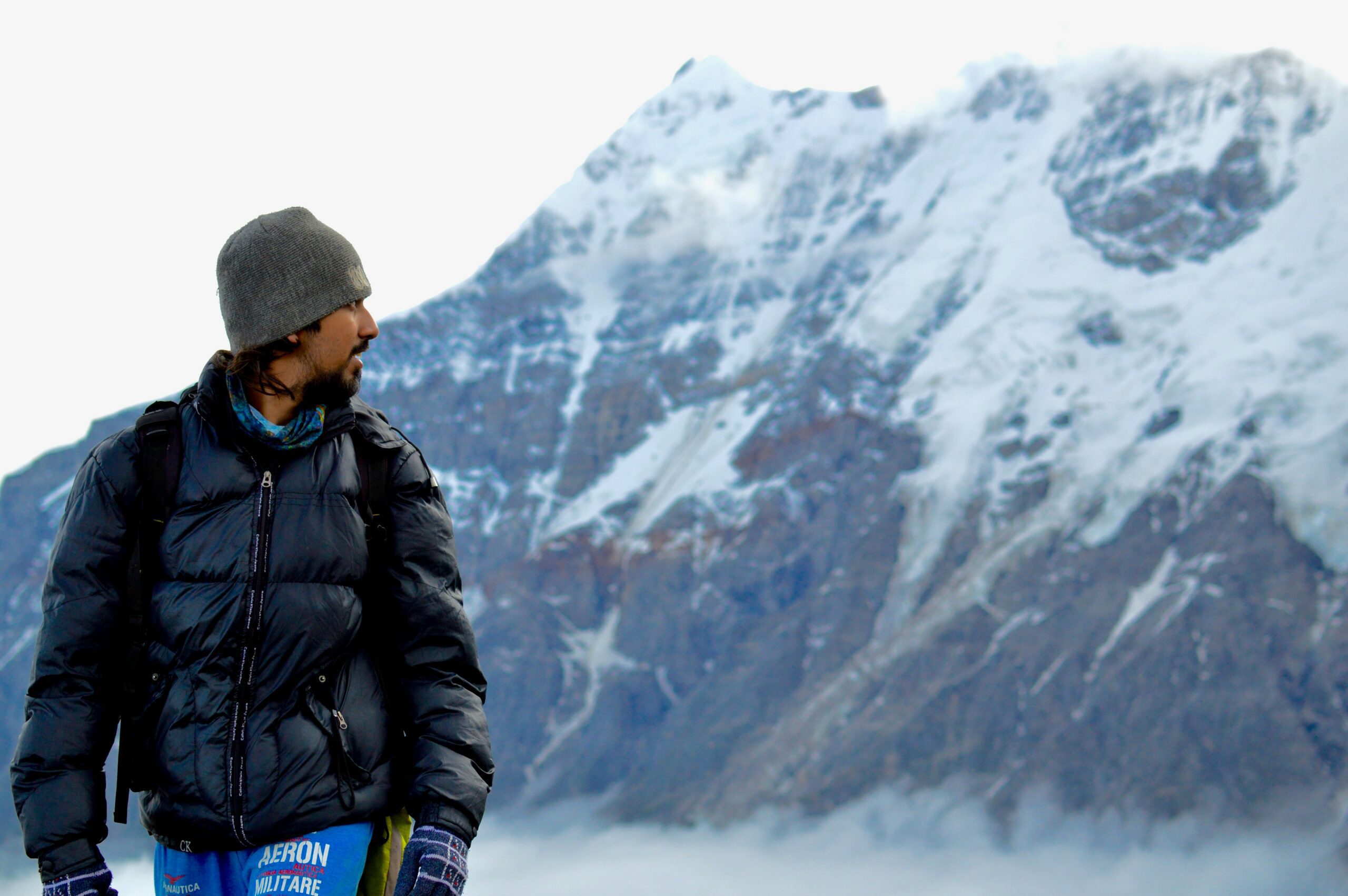Explore the Enigmatic Beauty of Uttarakhand’s Skeleton Lake Trek
Calling all adventure enthusiasts and history buffs! Tucked away amidst the majestic peaks of Uttarakhand is Roopkund, a trekking destination that stands apart. This high-altitude glacial lake, wrapped in myth and legend, extends an invitation with its breathtaking scenery, challenging trails, and an enigmatic secret waiting to be unveiled. So, gear up, lace up your boots, and prepare for a 4-5 day moderate-to-strenuous trek that promises to leave you captivated.
As you embark on this journey, you’ll traverse through dense forests, charming villages, and verdant meadows. The trail offers a variety of landscapes, from the lush greenery of the lower regions to the stark, barren beauty of the high altitudes. Each step you take will bring you closer to the stunning Roopkund Lake, known for its mysterious skeletal remains that have puzzled scientists and historians alike for decades.
The trek begins in the quaint village of Lohajung, where you’ll be welcomed with warm hospitality and a glimpse of the simple, serene lifestyle of the local people. From there, the path leads you through the rhododendron forests of Didna, the picturesque meadows of Ali Bugyal and Bedni Bugyal, and the steep, rocky climb to Bhagwabasa. Along the way, you’ll encounter a rich variety of flora and fauna, making every moment of the trek a nature lover’s delight.
One of the highlights of the Roopkund trek is the breathtaking view of the Trishul and Nanda Ghunti peaks, which dominate the horizon as you ascend. These majestic mountains provide a stunning backdrop to the trek and offer ample opportunities for photography and quiet reflection.
As you reach the glacial Roopkund Lake, at an altitude of about 16,500 feet, you’ll be greeted by a sight that is both eerie and awe-inspiring. The lake, surrounded by snow-covered mountains, holds hundreds of ancient human skeletons, visible when the ice melts. The origin of these remains is shrouded in mystery, with theories ranging from a catastrophic hailstorm to ancient rituals.
The trek to Roopkund is not just a physical challenge but a journey into the heart of Uttarakhand’s rich cultural and natural heritage. It’s an adventure that combines the thrill of high-altitude trekking with the allure of uncovering ancient secrets. Whether you’re a seasoned trekker or a history enthusiast, the Roopkund trek offers an experience that is both exhilarating and profoundly moving.
So, prepare yourself for an unforgettable adventure. With every step, you’ll be writing your own story amidst the timeless beauty and mystery of Roopkund.
Enchanting Trails, Mesmerizing Vistas:
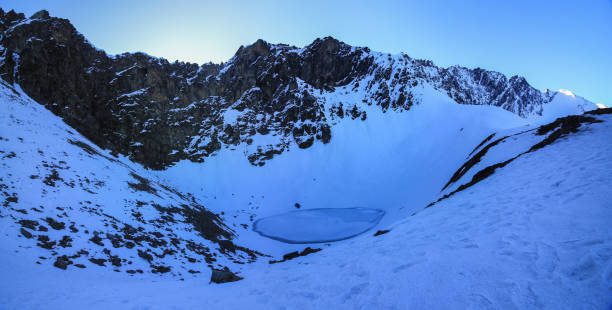
Envision traversing meadows adorned with wildflowers, ascending rugged mountain passes, and finally reaching the emerald jewel – Roopkund Lake, shimmering at an altitude of 15,700 feet. The Roopkund trek is a journey through a diverse and ever-changing landscape that promises to captivate your senses and challenge your spirit.
As you embark on this adventure, the trek begins with relatively easy paths, providing a gentle introduction to the journey ahead. Early stages feature gradual ascents through lush green meadows, where the air is filled with the sweet fragrance of blooming wildflowers. Villages like Lohajung and Bedni Bugyal serve as welcoming havens, offering respite and a glimpse into the local way of life. These charming spots provide an opportunity to rest, refuel, and immerse yourself in the serene beauty of the surroundings.
As you continue, the terrain becomes more demanding, with steeper climbs and rugged trails that test your endurance and determination. The higher altitudes bring more dramatic and awe-inspiring vistas. From Ghastoli, you’ll be treated to breathtaking views of the majestic Trishul and Nanda Ghunti peaks, their snow-capped summits piercing the sky and creating a striking contrast against the deep blue backdrop.
The trek’s final ascent leads you to Roopkund Lake, a pristine glacial lake nestled in a bowl-shaped depression surrounded by towering peaks. At this high altitude, the lake’s emerald waters glisten in the sunlight, creating a mesmerizing and tranquil scene. The lake’s surface, often calm and reflective, mirrors the grandeur of the surrounding mountains, enhancing the lake’s mystical allure.
One of the most magical moments of the trek is the sunrise over Roopkund. As the first light of dawn breaks over the horizon, the mountains are bathed in a warm, golden glow. The hues of orange and pink paint the snow-capped peaks, creating a breathtaking panorama that etches a lasting memory in your mind. The quiet beauty of the sunrise, combined with the serene setting of Roopkund Lake, offers a profound and memorable experience, capturing the essence of this remarkable trek.
Throughout the Roopkund trek, you will encounter a dynamic and ever-evolving landscape, from lush meadows and dense forests to rocky passes and high-altitude terrain. Each stage of the journey reveals new wonders and challenges, culminating in the awe-inspiring sight of Roopkund Lake. This trek is not just a physical challenge but a journey of discovery, offering a deep connection with nature and an unforgettable adventure that will stay with you long after your return.
Ready for the Challenge?
If you consider yourself moderately fit with a good dose of determination, the Roopkund trek is calling your name! Covering around 50-55 kilometers with an altitude gain of approximately 5,000 meters, the trek begins with comfortable walks but demands stamina and perseverance for the final ascent. Therefore, maintaining good physical condition before starting the trek is crucial.
When to Go:
May to June and September to October emerge as the ideal months to conquer Roopkund. These months offer pleasant weather, clear skies, and comfortable temperatures, ensuring an enjoyable trek. The summer months of May and June bring with them the beauty of blooming rhododendrons and lush green meadows, making the journey vibrant and picturesque. The snow from the previous winter melts away, clearing the trails and making the trek more accessible. During these months, trekkers can enjoy moderate temperatures during the day, ranging between 15 to 20 degrees Celsius, while nights can be cooler, often dropping to around 5 degrees Celsius.
September to October is another excellent period for the Roopkund trek. Post-monsoon, the skies are usually clear, offering breathtaking views of the surrounding Himalayan peaks like Trishul and Nanda Ghunti. The landscape, freshly washed by the rains, appears lush and rejuvenated, adding a touch of freshness to the trek. During these months, the temperatures are similar to those in summer, providing a comfortable trekking experience. However, be prepared for slightly colder nights, especially as you gain altitude.
It is crucial to avoid the winter months (November to April) for the Roopkund trek due to extreme snowfall and harsh conditions. The trails are often buried under deep snow, making them treacherous and difficult to navigate. Additionally, the temperatures can plummet to well below freezing, creating an inhospitable environment for trekking. The risk of avalanches and snowstorms is also significantly higher, posing serious safety concerns.
Monsoon season, from July to August, is also not recommended for the Roopkund trek. The region receives heavy rainfall during these months, which can lead to slippery and muddy trails, making the trek more challenging and risky. Landslides are a common occurrence, further complicating the trek and potentially causing delays or disruptions.
Therefore, planning your trek during the optimal months of May to June and September to October will ensure a safer, more enjoyable experience. During these periods, you can fully appreciate the natural beauty, rich biodiversity, and cultural heritage that the Roopkund trek has to offer, making your adventure truly unforgettable.
Reaching Roopkund:
By Air:
- Flight to Dehradun: Embark on your adventure with a flight to Dehradun’s Jolly Grant Airport, the closest airbase to the trek’s starting point.
- Shared Taxi or Jeep: From Dehradun, opt for a shared taxi or jeep to reach Sari Village, the trek’s starting point. Negotiate costs, which may vary based on the vehicle type.
- Estimated Cost: Plan for around INR 2,500-3,500 (USD 35-49), depending on your departure city.
By Train:
- Train to Haridwar: If trains are more to your liking, board one to Haridwar railway station, well-connected to major Indian cities.
- Travel to Sari Village: From Haridwar, proceed to Sari Village via shared taxi, jeep, or local bus, with prices varying.
- Estimated Cost: Budget for approximately INR 1,500-2,500 (USD 21-35), depending on your departure city.
Permits and Responsibility:
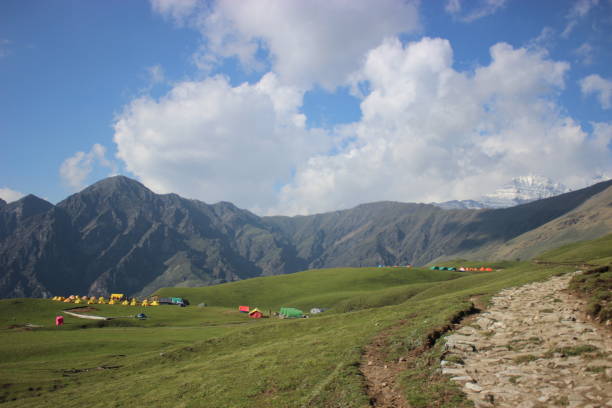
To ensure a smooth and eco-friendly trek, permits are mandatory and can be obtained from the Uttarkashi Forest Division office. These permits are crucial for regulating the number of trekkers and preserving the fragile ecosystem of the region. It’s advisable to secure your permits well in advance, especially during the peak trekking seasons, to avoid any last-minute hassles.
Respecting the environment is paramount when embarking on the Roopkund trek. As trekkers, we are guests in these majestic mountains, and it is our responsibility to minimize our impact on the pristine environment. Here are some essential guidelines to follow:
- Stick to Designated Trails: Always adhere to the marked trails and avoid creating new paths. This helps prevent soil erosion and protects the delicate alpine vegetation. Straying from designated trails can damage the flora and disturb the local wildlife.
- Waste Disposal: Carry all your waste with you until you find proper disposal facilities. Use biodegradable and reusable items whenever possible to minimize waste. Avoid leaving any litter, including food wrappers, plastic bottles, and other non-biodegradable items. Consider carrying a small bag to collect any litter you may come across on the trail, leaving the environment cleaner than you found it.
- Eco-Friendly Camping: If you are camping, choose established campsites and avoid setting up tents on fragile vegetation. Use a portable stove for cooking instead of open fires, which can cause lasting damage to the environment. Ensure that you leave no trace of your campsite when you depart.
- Water Sources: Be mindful of water sources. Avoid contaminating streams, rivers, and lakes by using biodegradable soaps and detergents at least 200 feet away from water bodies. Refill your water bottles at designated points and avoid polluting natural water sources.
- Wildlife Respect: Observe wildlife from a distance and do not disturb their natural habitats. Avoid feeding animals, as human food can be harmful to them and may alter their natural behavior.
- Cultural Sensitivity: Respect the local culture and traditions. Interact with local communities with kindness and gratitude. Support local businesses by purchasing locally made products and using local services.
- Leave No Trace: Follow the principles of “Leave No Trace” to ensure that the natural beauty and ecological integrity of the Roopkund trek are preserved for future generations. This includes minimizing campfire impacts, respecting wildlife, and being considerate of other visitors.
By adhering to these guidelines and securing the necessary permits, you contribute to the conservation efforts aimed at preserving the Himalayan environment. The Roopkund trek is a journey through a region of immense natural and cultural significance, and it is our collective responsibility to protect it. Let’s work together to ensure that this enchanting landscape remains unspoiled, allowing future generations to experience the same sense of wonder and awe that we do.
Packing Essentials:
Packing right is crucial for a comfortable and safe trek. Here’s your comprehensive checklist:
- Sturdy Trekking Shoes: Invest in a pair of high-quality trekking shoes with good ankle support and a strong grip. Make sure they are well-broken-in before your trek to avoid blisters and discomfort.
- Comfy Backpack (40-50 liters): Choose a durable backpack with a capacity of 40-50 liters, equipped with adjustable straps, a padded hip belt, and multiple compartments for efficient organization.
- Warm Clothes:
- Fleece Jacket: Lightweight yet warm, perfect for layering.
- Thermal Innerwear: Essential for maintaining body heat in cold temperatures.
- Down Jacket: Provides excellent insulation, especially during the chilly nights and higher altitudes.
- Waterproof Jacket and Pants: Protect yourself from rain and wind with a reliable waterproof jacket and pants. Look for breathable materials to avoid sweating.
- Hat, Gloves, Scarf: Keep your extremities warm with a thermal hat, insulated gloves, and a scarf or neck gaiter.
- Trekking Poles: These provide stability and reduce the strain on your knees during steep ascents and descents. Adjustable poles are preferred for better adaptability to different terrains.
- First-Aid Kit: A well-stocked first-aid kit is essential. Include band-aids, antiseptic wipes, pain relievers, blister treatment, and any personal medications.
- Water Bottle and Purifier: Carry a sturdy water bottle (at least 1-2 liters) and a reliable water purifier or purification tablets to ensure safe drinking water along the trail.
- Toiletries: Pack biodegradable soap, a small towel, toothpaste, a toothbrush, toilet paper, and hand sanitizer. Consider bringing a compact travel-sized toiletry kit to save space.
- High-Energy Snacks: Keep your energy levels up with nutritious snacks such as trail mix, energy bars, nuts, dried fruits, and chocolates. These are great for quick boosts of energy during the trek.
- Additional Items:
- Sunglasses with UV protection: To protect your eyes from the harsh glare of the sun at high altitudes.
- Sunscreen and Lip Balm: High SPF sunscreen and moisturizing lip balm to protect your skin and lips from sunburn and dryness.
- Headlamp or Flashlight: With extra batteries for navigating in the dark or during early morning starts.
- Multi-tool or Knife: Useful for various tasks, from preparing food to making minor repairs.
- Portable Charger: To keep your electronic devices powered up, especially if you use your phone for navigation or photography.
- Map and Compass/GPS Device: For navigation, even if you have a guide.
- Reusable Bags: For organizing your gear and keeping wet or dirty clothes separate.
By packing the right gear, you’ll ensure a comfortable, safe, and enjoyable trekking experience. Proper preparation is key to tackling the challenges of the Roopkund trek and making the most of this incredible adventure.
Budget Breakdown:
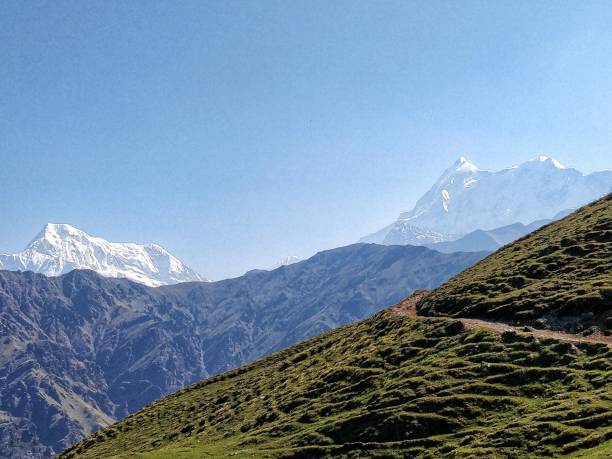
Permits:
- Indians: INR 500-700 (USD 7-10)
- Foreigners: INR 2,000-3,000 (USD 28-42)
Transportation:
- Shared taxis (Haridwar to Sari Village): INR 300-400 (USD 4-5) per person
- Local buses: INR 150-200 (USD 2-3) per person (more adventurous option)
- Trekking Agency (optional, but recommended): INR 12,000 – 18,000 (USD 168 – 252) per person. This usually covers accommodation, meals, porter/guide services, and logistics.
Accommodation:
- Camping (budget-friendly):
- Rent a tent and sleeping bag in Sari Village: INR 150-200 (USD 2-3) per night
- Camping gear: Bring your own to save on rentals.
- Homestays and lodges:
- Standard rooms: INR 500-800 (USD 7-11) per night
- Basic dormitories: INR 200-300 (USD 3-4) per night
Food:
- Local dhabas: INR 150-200 (USD 2-3) per meal
- Carrying your own food: INR 700-900 (USD 10-12) for the entire trek (most budget-friendly)
Other Expenses:
- Porter/Guide services: INR 800-1200 (USD 11-17) per day per person (optional)
- Medical kit: INR 300-400 (USD 4-6)
- Miscellaneous: Toiletries, snacks, camera batteries, laundry, etc. – INR 800-1200 (USD 11-17)
Remember: These are estimated costs and can vary depending on your choices and travel style.
Bonus Tips:
Acclimatize: Spend a few days in Sari Village or Rishikesh to adjust to the high altitude before starting the trek. Proper acclimatization helps prevent altitude sickness and allows your body to adapt to the reduced oxygen levels. Use this time to explore the local culture, visit nearby attractions, and prepare mentally and physically for the trek ahead.
Hire a Guide: A local guide can share valuable insights into the region’s culture, history, and the legendary Skeleton Lake. Guides not only enhance your trekking experience with their knowledge and stories but also ensure your safety on the trail. They can help navigate challenging sections, offer support in case of emergencies, and introduce you to hidden gems along the route that you might otherwise miss.
Respect Local Customs: Dress modestly, especially in villages. The local communities in the region have rich cultural traditions and values. Wearing appropriate clothing shows respect for their customs and helps in fostering positive interactions. Avoid wearing revealing or overly casual attire. Instead, opt for long sleeves, full-length pants, and scarves when visiting villages or interacting with locals.
Be Sustainable: Dispose of waste responsibly and avoid polluting the environment. Carry reusable items such as water bottles, utensils, and cloth bags to minimize waste. Pack out all non-biodegradable trash, including plastic, metal, and glass. Use biodegradable soap and personal care products to reduce environmental impact. Avoid using single-use plastics and participate in clean-up efforts if you come across litter on the trail.
Additional Tips for a Responsible Trek:
- Leave No Trace: Follow the Leave No Trace principles to minimize your environmental footprint. This includes staying on established trails, camping only in designated areas, and avoiding picking plants or disturbing wildlife.
- Support Local Communities: Buy locally made products and use local services whenever possible. This supports the local economy and helps preserve traditional crafts and livelihoods.
- Water Conservation: Use water sparingly and avoid contaminating natural water sources. Carry a water filter or purification tablets to treat water from streams and rivers.
- Wildlife Protection: Observe animals from a distance and do not feed them. Feeding wildlife can disrupt their natural behaviors and make them reliant on human food.
- Quiet Enjoyment: Keep noise levels down to maintain the serenity of the natural environment and respect other trekkers seeking a peaceful experience.
By taking these steps, you contribute to the preservation of the beautiful Roopkund region and ensure that it remains a pristine destination for future generations. Your responsible trekking practices not only protect the environment but also honor the local communities and their way of life, making your adventure a truly enriching and respectful journey.
Conclusion: Roopkund’s Enigmatic Charm
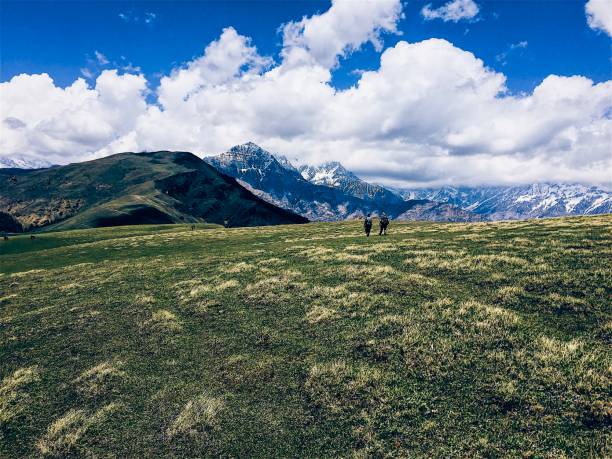
Beyond the breathtaking landscapes, Roopkund holds a unique mystery. The lake’s shores are lined with human skeletons, believed to be from an ancient pilgrimage that met its tragic end here. This eerie yet fascinating aspect adds another layer of intrigue to your trek, fueling your imagination as you explore the lake’s secrets. The skeletal remains, visible when the ice melts, have sparked numerous theories and legends, from ancient rituals to catastrophic hailstorms, making Roopkund a destination steeped in both history and myth.
The Roopkund trek is more than just a physical challenge; it’s an adventure for the soul. The stunning vistas, diverse flora and fauna, and historical mystery will leave a lasting impression. As you journey through dense forests, expansive meadows, and rugged mountain paths, you’ll encounter a wealth of natural beauty and cultural richness. The sight of the majestic Trishul and Nanda Ghunti peaks, the vibrant rhododendron blooms, and the serene alpine meadows will captivate your senses and inspire a deep connection with nature.
Along the way, you’ll have the opportunity to immerse yourself in the local culture, experiencing the warmth and hospitality of the villages you pass through. The stories shared by your guide and the encounters with local traditions will enrich your understanding of the region’s heritage and way of life.
The challenge of the Roopkund trek, with its demanding ascents and high-altitude conditions, is balanced by the profound sense of achievement and the tranquility of the natural surroundings. Each step brings you closer to the enigmatic Skeleton Lake, where the past and present converge in a hauntingly beautiful setting.
So, pack your bags, embrace the challenge, and get ready to be mesmerized by the magic of Roopkund. This trek offers not only the thrill of adventure but also a journey into the heart of one of the Himalayas’ most mysterious and captivating regions. Whether you are drawn by the allure of the unknown, the desire for a physical challenge, or the quest for stunning natural beauty, the Roopkund trek promises an unforgettable experience that will stay with you long after you’ve returned home.
Create Memories, Share Your Exploration!
Share your travel stories at Xplro.com. Let others be inspired by your Roopkund adventure and embark on their journey of discovery.




